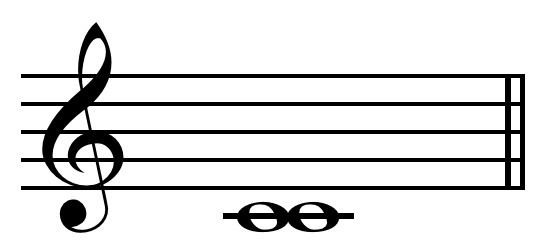Semitones 0 Just interval 1:1 Genre Pop | Abbreviation P1 Interval class 0 Record label WM Finland | |
 | ||
Other names perfect unison, prime, perfect prime Albums Unisono, Adventskonzert 2015, A Musical Celebration, Love To Sing, Adventskonzert 2014 Similar Chœur, Johann Sebastian Bach, Joseph Haydn, Ludwig van Beethoven, Wolfgang Amadeus Mozart | ||
Unison aperture ncs release
In music, unison is two or more musical parts sounding the same pitch or at an octave interval, usually at the same time.
Contents
- Unison aperture ncs release
- Unison reality ncs release
- Interval of the unison
- In unison
- Synthesizer
- Songs
- References
Rhythmic patterns which are homorhythmic are also called unison.
Unison reality ncs release
Interval of the unison
Two pitches that are the same or two that move as one.
Unison or perfect unison (also called a prime, or perfect prime) may refer to the (pseudo-)interval formed by a tone and its duplication (in German, Unisono, Einklang, or Prime), for example C–C, as differentiated from the second, C–D, etc. In the unison the two pitches have the ratio of 1:1 or 0 half steps and zero cents. Although two tones in unison are considered to be the same pitch, they are still perceivable as coming from separate sources, whether played on instruments of a different type: play unison on C, piano and guitar ; or of the same type: play unison on C, two pianos . This is because a pair of tones in unison come from different locations or can have different "colors" (timbres), i.e. come from different musical instruments or human voices. Voices with different colors have, as sound waves, different waveforms. These waveforms have the same fundamental frequency but differ in the amplitudes of their higher harmonics. The unison is considered the most consonant interval while the near unison is considered the most dissonant. The unison is also the easiest interval to tune. The unison is abbreviated as P1.
However, the unison was questioned by Zarlino as an interval for lacking contrast and compared to a point in geometry:
Equality is never found in consonances or intervals, and the unison is to the musician what the point is to the geometer. A point is the beginning of a line, although, it is not itself a line. But a line is not composed of points, since a point has no length, width, or depth that can be extended, or joined to another point. So a unison is only the beginning of consonance or interval; it is neither consonance nor interval, for like the point it is incapable of extension.
"In unison"
Several singers singing a melody together.
In orchestral music unison can mean the simultaneous playing of a note (or a series of notes constituting a melody) by different instruments, either at the same pitch; or in a different octave, for example, cello and double bass (all'unisono). Typically a section string player plays unison with the rest of the section. Occasionally the Italian word divisi (meaning divided, abbrev. div.) marks a point where an instrumental section, typically the first violins, is to be divided into two groups for rendering passages that might, for example, include full chords. Thus, in the divisi first violins the "outside" players (nearer the audience) might play the top note of the chord, while the "inside" seated players play the middle note, and the second violins play the bottom note. At the point where the first violins no longer play divisi, the score may indicate this with unison (abbrev. unis.).
When several people sing together, as in a chorus, the simplest way for them to sing is to sing in "one voice", in unison. If there is an instrument accompanying them, then the instrument must play the same notes being sung by the singers (in order for there to be unison). Otherwise the instrument is considered a separate "voice" and there is no unison. If there is no instrument, then the singing is said to be a cappella. Music in which all the notes sung are in unison is called monophonic.
From this sense can be derived another, figurative, sense: if several people do something "in unison" it means they do it simultaneously, in tandem, in lockstep. Related terms are "univocal" and "unanimous".
Monophony could also conceivably include more than one voice which do not sing in unison but whose pitches move in parallel, always maintaining the same interval of an octave. A pair of notes sung one or a multiple of an octave apart are almost in unison, due to octave equivalency.
When there are two or more voices singing different notes, this is called "part singing". If they are singing notes at different pitches but with the same rhythm this is called homophony. An example is a barbershop quartet or a choir singing a hymn. If each voice is singing an independent line (either the same melody at a different time, or different melodies) this is called polyphony.
Synthesizer
On synthesizers, the term unison is used to describe two or more oscillators that are slightly detuned in correspondence to each other, which makes the sound fatter. This technique is so popular that some modern virtual analog synthesisers have a special oscillator type called "super saw" or "hyper saw" that generates several detuned sawtooth waves simultaneously. This method is often used in techno and trance.
Songs
Te quieroLove To Sing · 2016
Jedi And RekkuUnisono · 1975
Boulevard BluesUnisono · 1975
